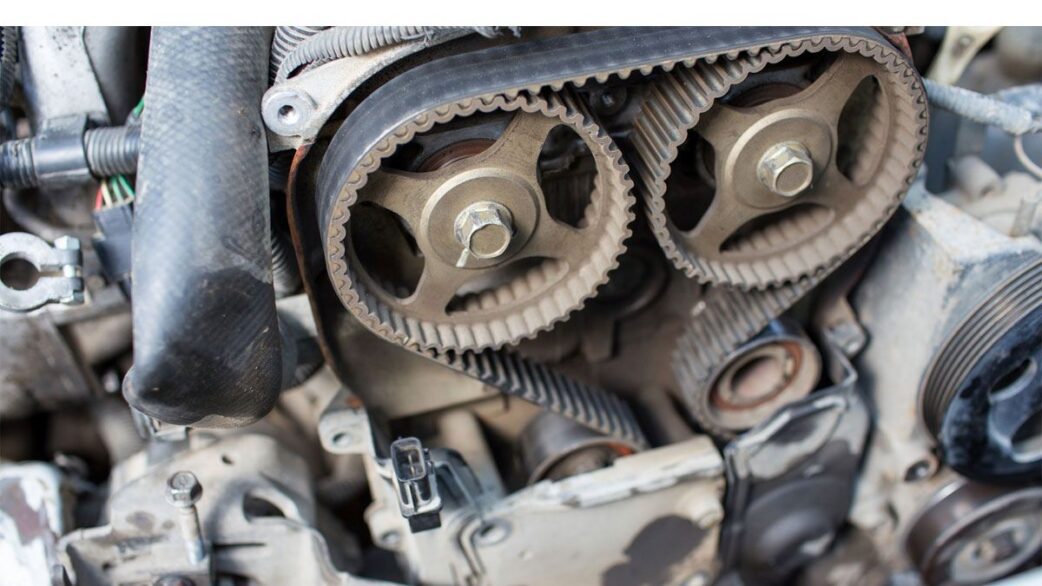The timing belt is a crucial component responsible for maintaining the synchronization between the engine’s camshaft and crankshaft. Over time, this wear-resistant component deteriorates and can cause severe engine damage if not replaced at regular intervals. However, it can be difficult to determine if a timing belt has been replaced or not, especially when purchasing a used vehicle. In this article, we will share some essential tips to identify whether a timing belt has been replaced or not, enabling vehicle owners to make informed decisions and prevent potential engine failures.
How to tell if timing belt has been replaced
- Consult the Vehicle’s Maintenance Documentation:
The first step in determining if a timing belt has been replaced is to review the vehicle’s maintenance documentation. Ideally, this documentation should include details of any timing belt replacements along with the date and mileage at which the replacement was performed. Check the service records to see if there is any mention of a timing belt replacement. If the documentation is incomplete or unavailable, proceed to the next steps to verify the timing belt’s condition.
- Observe the Belt’s Condition and Appearance:
One of the most obvious signs of a recently replaced timing belt is its condition and appearance. A fresh timing belt will appear clean, without any signs of wear, fraying, cracking, or oil contamination. Inspect the belt for any visible signs of damage or abnormal wear. Additionally, a well-maintained timing belt should have clear and readable manufacturer markings such as part numbers and arrows indicating the direction of rotation. If the belt appears worn, damaged, or lacks precise markings, it may be an indication that it has not been recently replaced.
- Check for Service Stickers or Labels:
Another helpful clue to determine if a timing belt has been replaced is to look for service stickers or labels. After a timing belt replacement, reputable mechanics often place stickers or labels indicating the mileage at which the replacement was performed. These labels are typically fixed on the engine compartment or inside the owner’s manual. Check for any such stickers or labels displaying recent timing belt replacement information. However, it is important to note that the absence of a sticker does not necessarily mean the timing belt has not been replaced, as it could have been replaced by an individual or shop that did not attach one.
- Inspect the Tensioner and Idler Pulleys:
Upon inspection, the condition of the timing belt tensioner and idler pulleys can provide valuable insights into the status of the timing belt. These components often wear out at a similar rate to the timing belt itself. Hence, if these parts show signs of wear or have been recently replaced, it is likely that the timing belt has been addressed as well. Look for any visible indications of oil leakage, corrosion, or bearing noise. Smooth and quiet operation of these pulleys is a good indication of a well-maintained timing belt system.
- Analyze the Mileage and Time Since Last Replacement:
While the lifespan of a timing belt varies depending on the vehicle’s make, model, and driving conditions, most manufacturers recommend replacing the timing belt between 60,000 to 100,000 miles or every 5 to 7 years, whichever comes first. Check the vehicle’s mileage and compare it to the manufacturer’s recommended replacement interval. If the mileage exceeds the recommended limit, it indicates that the timing belt might need replacement unless it has been recently replaced. Similarly, if the timing belt replacement is due based on the elapsed time, it provides valuable insights into its replacement status.
- Seek Professional Assistance:
If you are unsure about the condition or replacement history of the timing belt, it is always recommended to seek professional assistance. A qualified mechanic or technician can conduct a thorough inspection and provide a definitive answer regarding the timing belt’s replacement status. They can also check for tension, alignment, and any potential issues that may arise due to a neglected or aged timing belt.
Symptoms of a Bad Timing Belt
Symptoms of a bad timing belt may include:
- Engine misfires or runs rough: If the timing belt is loose or has slipped, it can cause the engine’s timing to become out of sync. This can result in the engine misfiring or running rough.
- Difficulty starting the engine: A bad timing belt can make it difficult for the engine to start. This is because the timing belt is responsible for synchronizing the camshaft and crankshaft, which are necessary for starting the engine.
- Engine stalls or dies while driving: If the timing belt breaks while the engine is running, the engine may stall or completely shut off. This is because the timing belt is responsible for keeping the camshaft and crankshaft in sync, and if it breaks, the engine will no longer be able to function.
- Engine noise: A loose or worn timing belt can cause a ticking or rattling noise coming from the engine. This noise is often more noticeable at higher speeds or under load.
- Reduced engine power: If the timing belt is not functioning properly, it can result in a loss of engine power. This can cause the vehicle to have reduced acceleration and overall performance.
- Check engine light: A bad timing belt can trigger the check engine light.
Related posts:
How to modify wheel well/fender liner for rolled fenders?
How to tell if timing belt has been replaced – Conclusion:
Regularly inspecting and replacing the timing belt is crucial to prevent catastrophic engine failure. While it may be challenging to determine if a timing belt has been replaced on a used vehicle, paying attention to its condition, appearance, mileage, and consulting maintenance records will provide valuable insights. Additionally, seeking professional assistance for a thorough inspection can help ensure the safety and longevity of your vehicle’s engine. By following these tips and exercising due diligence, you can make informed decisions when purchasing a used vehicle or scheduling a timing belt replacement.



